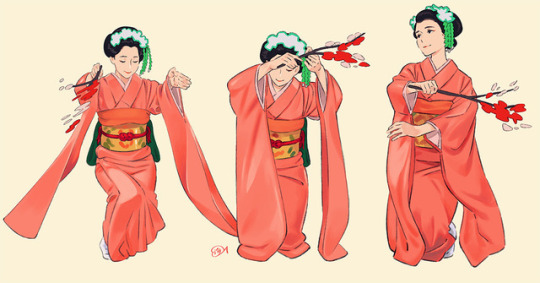Text

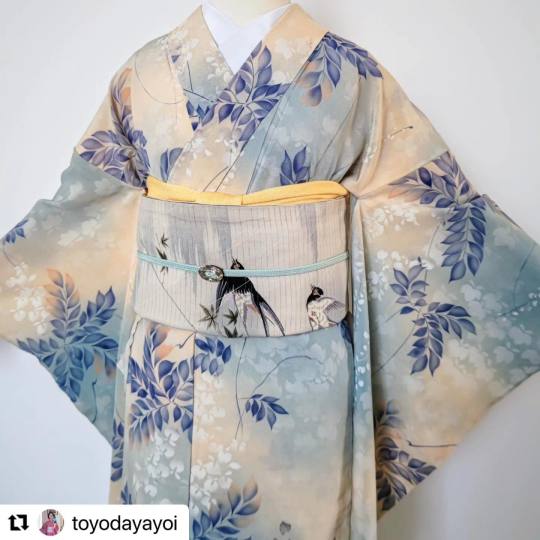
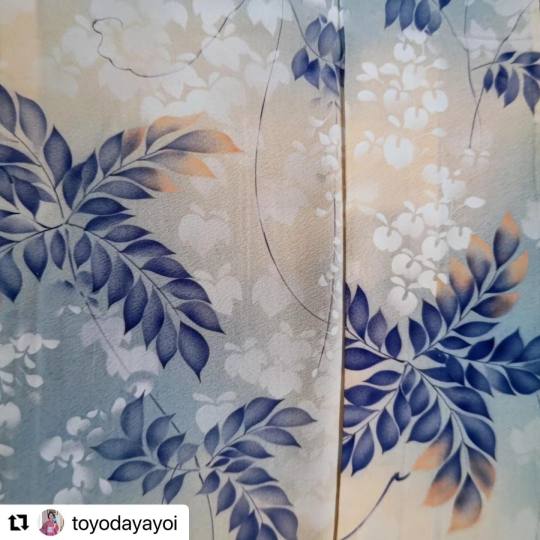


Silvery blue hues for this antique outfit, pairing a fresh kimono pattern with fuji (wisteria) and discreet sakura (cherry blossoms), with a nure-tsubame (swallows in the rain) summer weave obi
142 notes
·
View notes
Text
接続詞(せつぞくし)
conjunctions - words that are used to link phrases together
情報を加える // Adding information:
しかも besides
そのうえ moreover, on top of that
さらに moreover, on top of that
そればかりか not only that, but also...
そればかりでなく not only that, but also...
情報を対比する // Putting into contrast:
それに対して in contrast
一方 whereas
他の可能性・選択肢を言う // Giving alternatives:
あるいは or perhaps (presenting another possibility)
それとも or (presenting another option within a question)
結論を出す// Drawing a conclusion:
そのため for that reason
したがって therefore
そこで for that reason (I went ahead and did...)
すると thereupon (having done that triggered sth. to happen)
このように with this (adjusting a conclusion to the arguments given beforehand)
こうして in this way
理由を言う // Giving a reason:
なぜなら...からだ the reason is
というのは...からだ the reason is
逆説を表現する // Expressing a contradiction:
だが however, yet, nevertheless (contradicting what one would have expected)
ところが even so (spilling a surprising truth)
それなのに despite this, still
それでも but still (despite a certain fact, nothing changes)
説明を補う // Amending one's explanation:
つまり that is, in other words (saying the same thing using different words)
いわば so to speak (making a comparison)
要するに to sum up, in short
説明を修正する // Revising one's explanation:
ただし however (adding an exception to the information stated beforehand)
ただ only, however
もっとも however (obviating any expectations that might arise through the previous statement)
なお in addition, note that (adding supplementary information)
話題を変える // Changing the subject:
さて well, now, then (common in business letters after the introductory sentence; is often ignored in tranlations)
ところで by the way
667 notes
·
View notes
Text

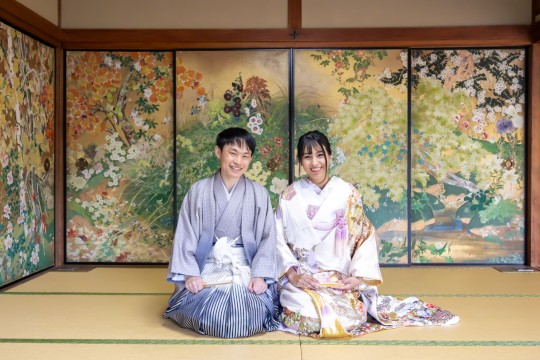

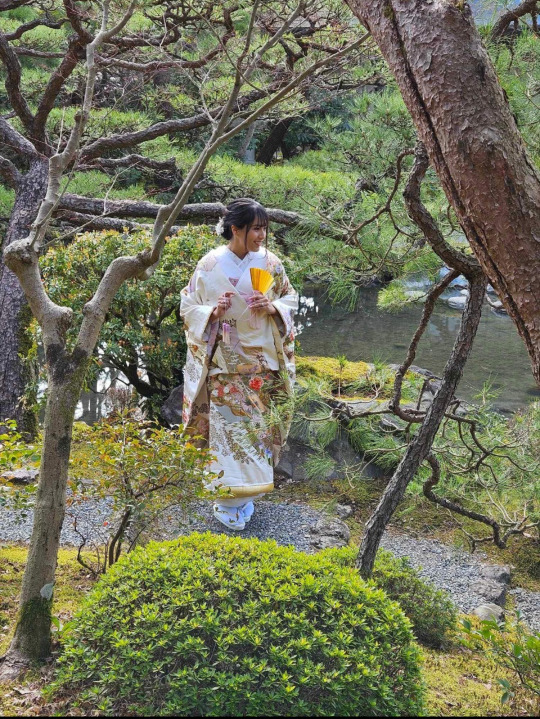
🌸Some were asking what my full wedding dress ended up looking like, I don't mind sharing so here are a few I still have on my phone🌸
💛Have a good day guys💛
21 notes
·
View notes
Text




🌸Some were asking what my full wedding dress ended up looking like, I don't mind sharing so here are a few I still have on my phone🌸
💛Have a good day guys💛
21 notes
·
View notes
Photo

Soooo I made myself an infographic to remember those tricky Japanese Counters.
Thought this might help with your studying as well ~ ;)
1K notes
·
View notes
Text
I do like HeyJapan🌸
Japanese Apps instead of Duolingo
Beelinguapp
Bluebird
Bunpo
Busuu
Clozemaster
Drops
HeyJapan
Hiragana Quest
Infinite Japanese
kawaiiDungeon
Ling
Lingodeer
Lingopie
Lingvist
LingQ
LyricsTraining
Mango
Mondly
Oyomi Japanese Reader
renshuu
Takoboto Japanese Dictionary
Todaii
Qlango
Write It! Japanese
556 notes
·
View notes
Photo
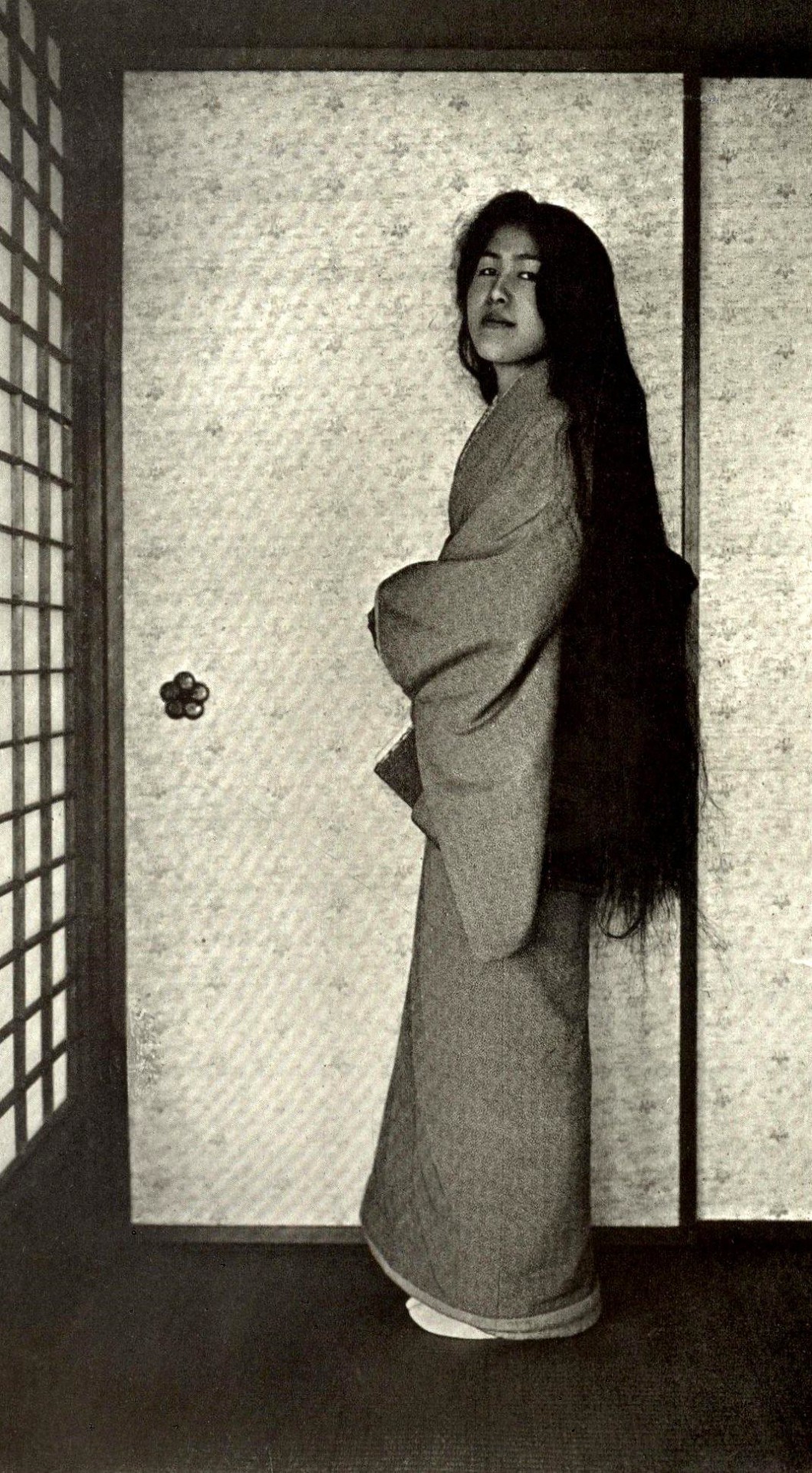
Herbert Ponting
(The real hair of a real geisha)
c. 1905
549 notes
·
View notes
Text
神無月 (kan-na-zuki) "October" (archaic)

神 = god
無 = not
月 = month
The modern Japanese word for October is 十月 (literally "10th Month), however in the old-fashioned calendar is was known as 神無月, or "the month with no gods".
In October, all the gods in Japan (there are believed to be 8 million of them) go to Izumo Shrine in Shimane Prefecture for a meeting, thus leaving most of Japan with no gods.

The huge shimenawa (sacred rope) at Izumo Shrine.
923 notes
·
View notes
Text

Common Feelings in Japanese 💕 PS: Learn Japanese with the best FREE online resources, just click here https://www.japanesepod101.com/?src=tumblr_infographic_common_feeling_041124
37 notes
·
View notes
Text
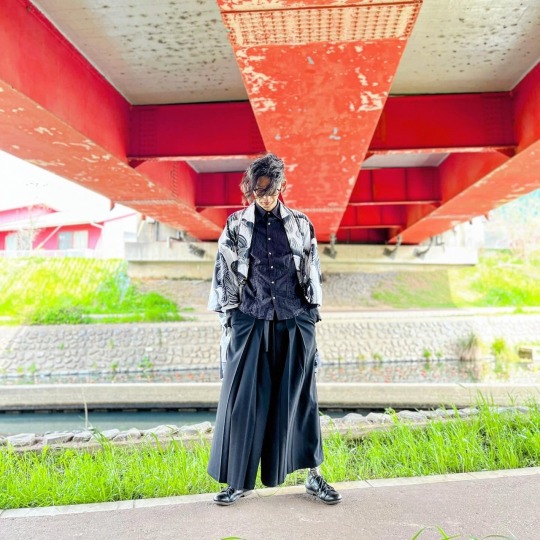
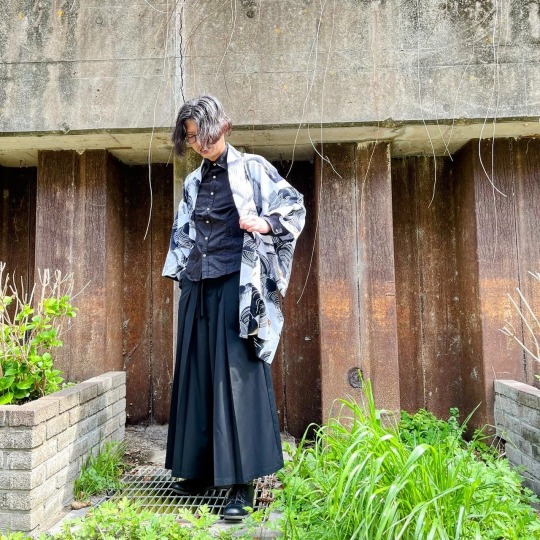
Best modern styling for this outfit pairing a hakama + haori worn with a Western styled shirt
208 notes
·
View notes
Text

_____Kazuko Shiihashi (1954-),Cobalt Blue Hill, Nihonga, Natural mineral pigment on Japanese handmade crushed paper
654 notes
·
View notes
Text
Let's read kana!
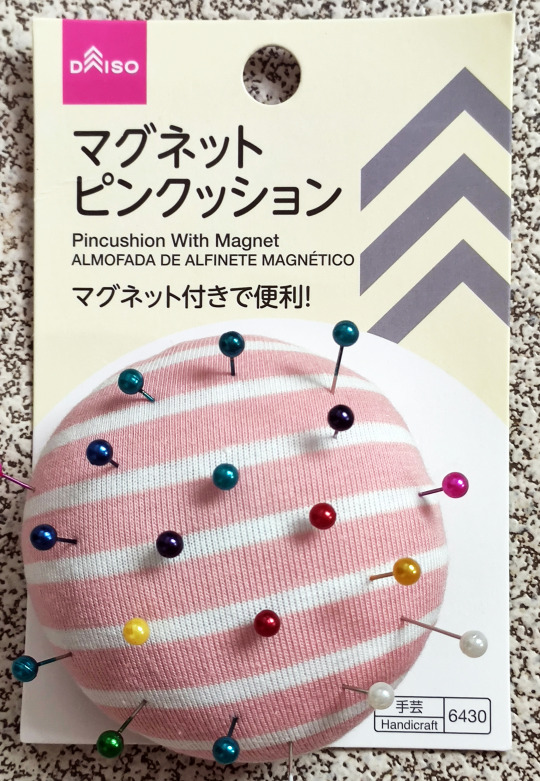
Let's read kana from this pincushion from Daiso!

マグネット ピンクッション
magune(t)to pinku(s)shyon
Magnetic Pincushion

マグネット 付き で 便利!
magune(t)to tsuki de benri!
It's convenient with a magnet!
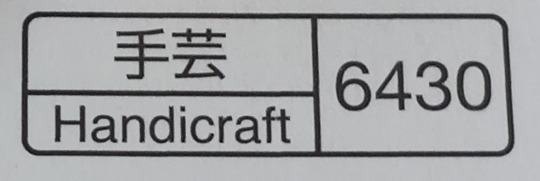
手芸
手 Shu (hand) 芸 gei (technique, art)
Handicraft
74 notes
·
View notes
Text
大きいサイズ!!! PLUS-SIZE SHOPPING IN JAPAN
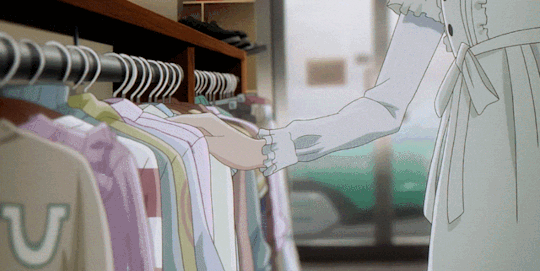
*This post is intended to be helpful for people already living in Japan who need to find everyday clothing, it’s not going to be useful for people living outside Japan who want to buy kawaii Tokyo fashion. This is also mainly geared toward women’s clothing, as it’s harder to find than men’s plus size clothing, but some of the stores and sites I mention here will be useful for plus size guys as well!
So let’s start at the beginning.
JP SIZING
Japanese sizes in general go from S, M, L, and plus sizes will be indicated from LL (extra large) all the way to 10L. For reference purposes on this post, I am a size 16/18 in CAN/US sizing, a 22 in UK sizing, and a JP size 5L for most plus-size brands, although the sizes are not standardized across brands (meaning that for some brands, a 5L will be either too big or too small).
If you are above a size 3L, which is the largest size they stock in most regular stores (Uniqlo, for example, only stocks S, M, L, and XL for women*, so I don’t fit into any of their clothes) you will have to do most of your shopping online! There *are* physical plus-size stores around, though, so keep an eye out for stores that look like this:
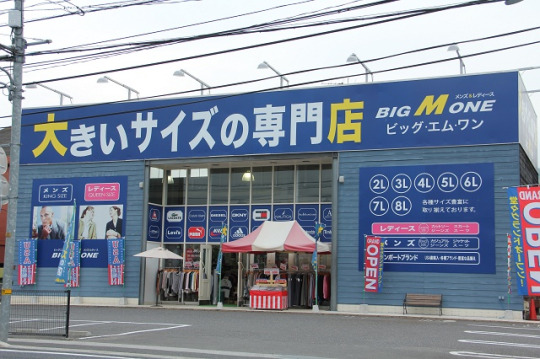
大きいサイズ (おおきいサイズ) - plus-size (lit. large size)
レディースの大きいサイズ - Ladies’ large size
メンズの大きいサイズ - Mens’ large size
Here’s some useful Japanese you can use while shopping in a physical store:
大きいサイズがありますか? Do you sell large size clothes?
これのもっと大きいサイズ、ありますか? Do you have this in a larger size?
It can be a bit difficult finding your size in Japan, but don’t give up! Plus size Japanese women *do* exist and they look cute as heck, and so can you.

PHYSICAL STORES
H&M Japan (they use S, M, L, XL sizing or US sizes up to 16, so I would say around a 4L Japanese size. I am able to fit into some of their clothing based on the cut and style of the garment, but most of their tops/dresses are too tight in the chest for me). Good for a variety of styles, from work clothes to casual
しまむら - They carry up to a 4L, good for basics and casuals
青山 (あおやま) - Great for work/business attire. (They call their plus-size line クイーンサイズ which I find extremely adorable omg). Their sizing is a bit different as they carry from 19号~ 37号, but the sizing charts should help you figure out which size you need.
PUNYUS - There are only a few of these stores around, in big cities like Tokyo and Osaka, but I love this brand so I’ll be talking about their online store later in the post. The brand was established by Naomi Watanabe, one of Japan’s foremost plus-size comedians and TV personalities, and I absolutely LOVE her. Punyus uses their own sizing in 1, 2, 3, or 4. (I am usually a 2, but I always check the measurements for each garment very carefully because for some items I am a 3 or 4).
*Uniqlo carries up to a 4L in men’s sizes, but you usually have to order the larger sizes online as they don’t stock them in the regular stores.)
There are obviously way more stores than this that carry plus-sizes, and most of them will have the 大きいサイズ sign right on the outside of the store. I’ve even managed to find some cute items in the 大きいサイズ section of my local grocery/department store of all places (although don’t expect much from department stores, most of the fashion in these places will be very tame grandma clothes).
Now, let’s get into online shopping, which is the easiest method but can be a little tricky. The first thing you need to do is figure out your measurements, as the majority of online products will have a detailed size chart that is very useful for ensuring a good fit without trying it on.
SIZE CHARTS
Size charts will look like this, and will use centimetres:
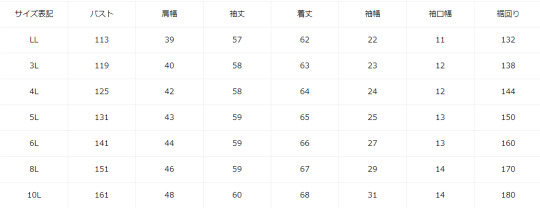
サイズ表記 (サイズひょうき) - size notation
バスト - bust (the measurement around your chest)
肩幅 (かたはば)- shoulder width (measurement from shoulder to shoulder)
袖丈 (そでたけ) - sleeve length
着丈 (きたけ)- length (of the whole garment, Japanese ones tend to run short. I’m not even particularly tall but a lot of shirts tend to fit like crop tops here)
袖幅 (そではば)- sleeve width
袖口 (そでぐち)- cuff
幅裾 (はばすそ)- hem width
回り (まわり)- circumference (measurement around the bottom)
ウエスト - waist
ヒップ - hips
In general, the measurements that’ll be most useful will be bust, waist, hips, and length of the garment. As you can see on the model below, those measurements make her a size 3L. My measurements are 128-106-135 and I’m 168cm tall so I’m usually a 5L.
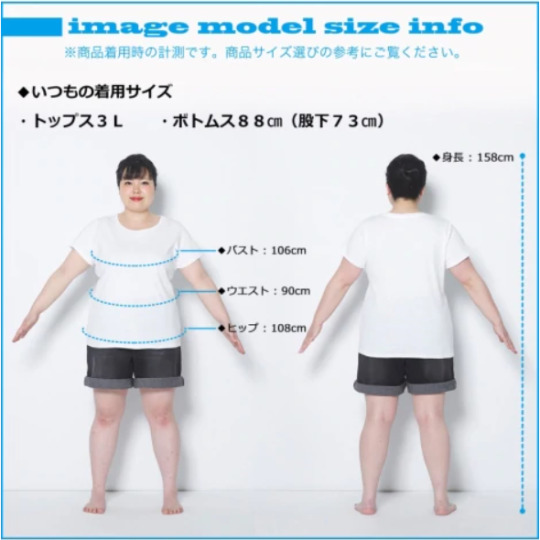
Once you know your measurements, it’s time to start browsing! I’ll briefly introduce my top picks for useful online stores.
ONLINE STORES
1. Nissen

This website is great and I use it all the time. It’s like an online shopping mall that carries the plus size options from a bunch of different brands, so you can just check here instead of browsing each brand individually.
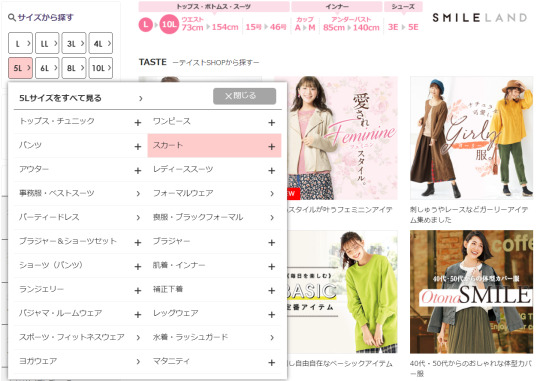
You can search by size, category, colour- it’s super convenient and easy, and the website is also available in English.
SHOES
This site also has great options for shoes above 25cm (which is the largest size they sell in most shoe stores for women). My shoe size is 26.5cm with 4E width (extra wide) and I can easily find shoes here.
TALL SIZES
I mentioned before that some of the shirts here tend to fit fairly short, even for my 168cm (5′6″) height. Never fear, there are tall size options as well.

The tall sizes will be annotated with a TT next to it- as you can see, the first 3 options in the picture are MTT - 5LTT, and the 4th one doesn’t have the TT, so it will be a normal length. Again, you can just click on the item and go to the size chart to check the length in cm to see if it will fit.
2. Alinoma

Very similar to Nissen in that it gathers clothing from different brands all right here on the same site, and you can also use the parameters along the side to customize your search by size, category, colour, etc.
One of my favourite brands (available from both sites) is タベルノスキー、which has super cute stuff~

3. PUNYUS Online Store

The clothes here are more trendy, playful, casual clothes, and I love that they use larger plus-size models than some of the other sites (including Naomi Watanabe herself). I buy a lot of non-work clothes from here.
*Note that all these sites have really reasonable shipping fees within Japan and also have frequent sales, as well. And they’re really easy to use with google translate.
INNER WEAR
Now, as for the busty gal trying to find bras and lingerie in Japan…

Don’t worry!!! I’ve found that most lingerie stores don’t stock my size, but again, it’s possible to order them online using either Nissen or Alinoma. You’ll want to look for the インナー tab, and ta-da! (Just keep in mind that the band in Japan is measured in cm).

To wrap up, I’d just like to reiterate that if you are plus-size in Japan and having trouble finding clothes, you’re not alone! There are lots of us here and there *are* brands out there that make cute clothes for us. If you see something you like in a store, go in and check it! The sizing is not only wildly different between brands, but it can even be different between different garments in the same brand. Don’t be afraid to try things on! You might be surprised by what actually fits and looks good.
Happy shopping!
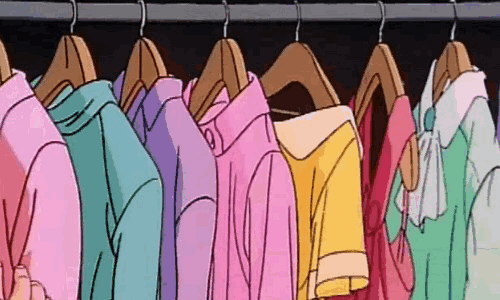
336 notes
·
View notes
Text
Other formal outfits of Heian ancestry - Kariginu, Hoi and Nôshi attires
(as worn by samurai of the Edo period - great charts by Nadeshico Rin). You can find more about samurai ranks and their regulated attires under the tag "samurai kimono".
The Kariginu

狩衣 Kariginu first appeared during Heian period where they were informal attires worn by kuge (nobibilty) men for activities such as hunting and 蹴鞠 kemari ball games.
Kariginu rose to formal status during Kamakura period when it started being worn by the buke (warrior class). In Edo period, it was worn by upper-ranked samurai (4th rank and above).
Edo-period kariginu designates a patterned clothing (different from the hoi, see below), often decorated with the family 紋 mon (crest). Colors were not regulated.
風折烏帽子 Kazaori-eboshi - black-lacquered hat made of silk, cloth or paper, originally worn by Heian nobility. Many eboshi shapes exist, this one is a upright style (tate-eboshi 立烏帽子) with top folded to the left.
末広 Suehiro - a type of formal folding fan.
TN: the fan drawn here ressemble more a 中啓 chûkei, as suehiro have curving ribs which don't seems to be the case here (find more about fan types here)
指貫 sashinuki (or 奴袴 nubakama) - large bouffant pants.
Also, note the bare feet! Rin doesn't comment this but this was probably a way to put it below sokutai and ikan (which do have socks)
袖括 Sodekukuri - decorative sleeve ties. Originally appeared on Heian clothings (like kariginu, nôshi, etc) where they were used to tighten sleeve cuffs.
The Hoi

布衣 Hoi is a variation of 狩衣 kariginu (see above).
During Edo period, it was worn by some hatamoto (6th rank samurai) via explicit permission of the shogunate - setting those rewarded by this honor apart from other vassals of the same rank.
Compared to kariginu, hoi were plain solid color.
It is worn here over a 熨斗目 noshime, a samurai kosode (=ancestor of the kimono) with stripes or lattice pattern at waist area.
As for the kariginu, note the bare feet!
The Nôshi
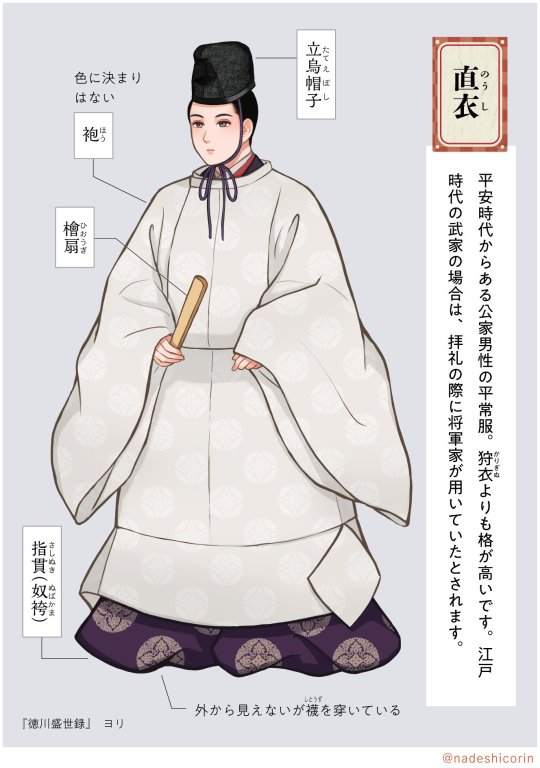
直衣 Nôshi was a type of everyday robes which were first worn by males of the imperial family during Heian era. Formality placed it then above kariginu.
Overtime, their use spread among nobility, and by Edo period, they were a "tad-formal" attire worn by Shogun's family for worship celebrations.
立烏帽子 Tate-eboshi - upright lacquered hat
袍 Hô - round-necked robe with large boxy sleeves
檜扇 hiôgi - formal folding fan made of cypress, also of Heian history. Those were unpatterned as painted ones were for women
指貫 Sashinuki (or 奴袴 nubakama) - large bouffant pants
190 notes
·
View notes

